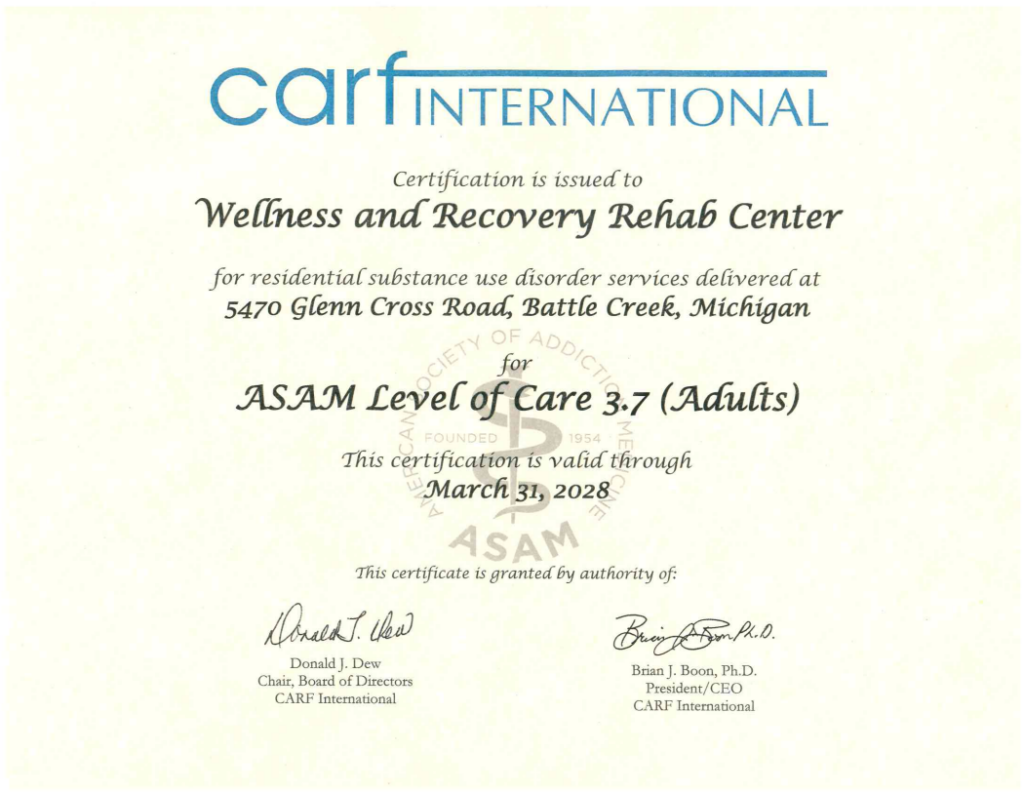
Discover how comprehensive treatment at Wellness and Recovery can be an effective part of your co-occurring chronic pain management.
Chronic pain is not just a physical condition – it can quietly reshape how a person feels, thinks, and connects with others.
Unlike acute pain, which typically fades as the body heals, chronic pain lingers. It may last for months or even years, often becoming an unwelcome companion in daily life. Over time, it even can influence a person’s mood, relationships, and sense of identity.
Too often, chronic pain even leads to substance misuse. Individuals turn to substances as a method of pain management, seeking temporary relief when other options feel out of reach.
What starts as an attempt to cope can quickly spiral into dependence, creating a cycle where both pain and addiction feed into each other.

At Wellness and Recovery in Battle Creek, Michigan, we take a whole-person approach to your recovery. We offer integrative, whole-person care alongside co-occurring chronic pain management.
We recognize that pain does not exist in isolation. It interacts with stress, anxiety, depression, and even sleep. When these emotional components are ignored, healing is incomplete.
Comprehensive and co-occurring chronic pain management at Wellness and Recovery means that we’ll help you attend not only to the discomfort in your body, but also to the emotional toll it takes.
Chronic pain may be complex, but healing becomes more possible when treatment addresses the whole person: body, mind, and heart.
Chronic pain typically persists for three months or more, although many people experience it for much longer. Unlike acute pain, which usually begins with a clear cause – such as a broken bone or a surgical procedure – chronic pain continues even after the original injury heals.
Certain conditions, such as osteoarthritis, fibromyalgia, or persistent lower back pain, often underlie chronic discomfort. Long-term inflammation, nerve damage, or repeated stress on specific joints can keep the pain cycle going.2
Anxiety or depression can also lower a person’s tolerance for pain. Stress hormones flood the body when someone feels overwhelmed, making any discomfort feel sharper and more consuming.
Comprehensive chronic pain management must consider the psychological roots of discomfort. Counseling, therapy groups, and skill-building exercises are central to our approach at Wellness and Recovery.
We specifically target anxiety, depression, and any related challenges that contribute to your co-occurring chronic pain. Approaches in chronic pain management, like cognitive behavioral therapy, can help people change negative thought patterns that increase distress.

There are various traditional strategies for chronic pain management. It’s imperative to balance the risks and rewards of each chronic pain management strategy before committing to any particular method.
We see co-occurring chronic pain management and substance use treatment as two parts of one continuum. If someone has already developed a substance use disorder, we offer structured detox programs that help them withdraw safely under close medical supervision.

By including medical expertise, mental health support, and holistic techniques, chronic pain management becomes a journey toward a healthier and more fulfilling way of life.
Guided by a holistic philosophy, Wellness and Recovery emphasizes comprehensive care, supporting clients through both the physical and emotional challenges of persistent discomfort.
If you or a loved one is experiencing persistent pain, it’s imperative to get the care and support you deserve for holistic healing. This includes seeking treatment for any substance use or mental health concerns that may arise.
You do not have to handle these challenges alone. With the right chronic pain management, life can become more balanced, hopeful, and manageable. Contact us today to start the path to finding relief tomorrow.
